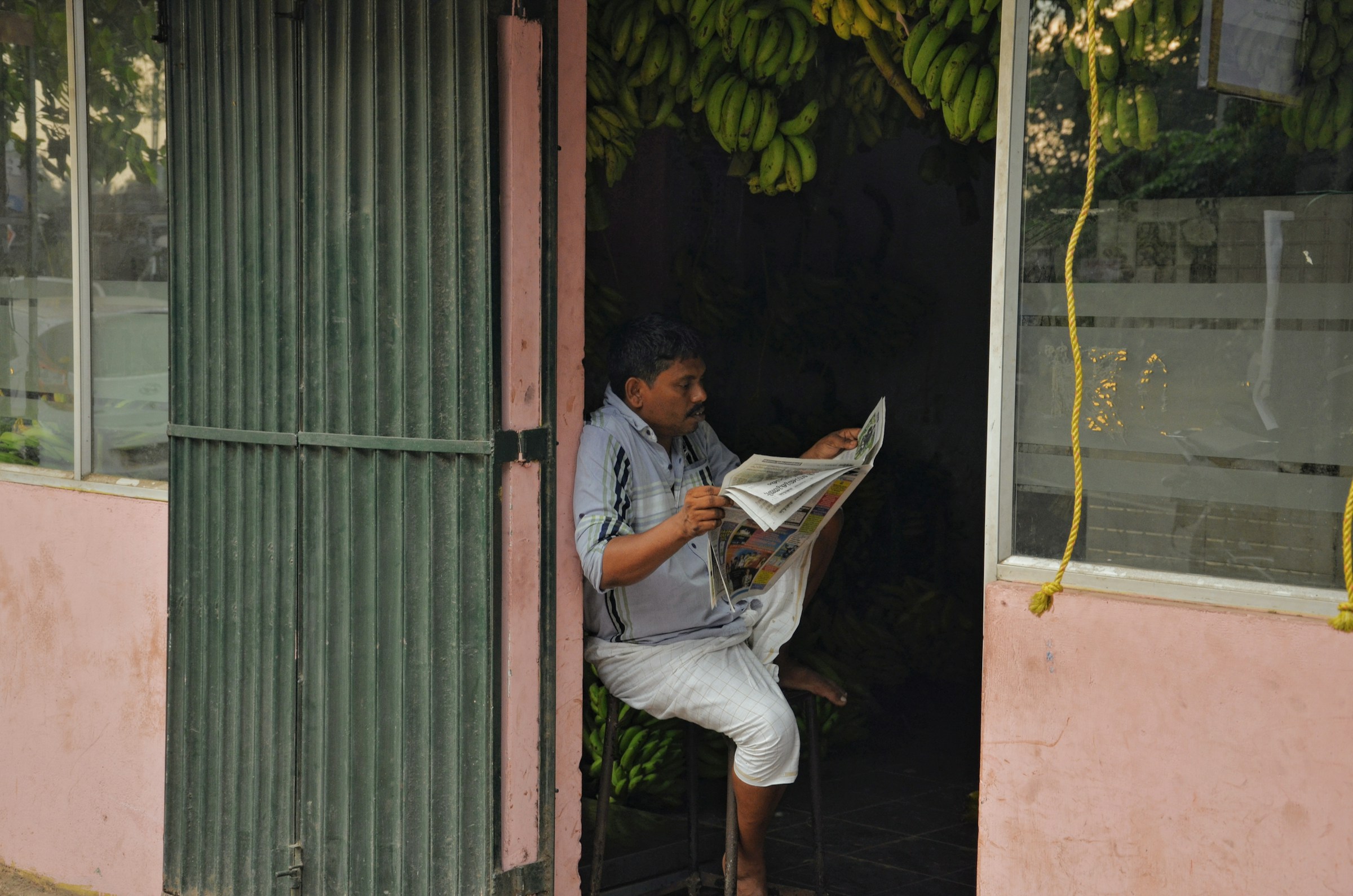A morning routine is not a trend or a personality badge. It is a simple sequence that steadies the start of the day and shields it from randomness. When the morning has structure, the hours that follow feel lighter. Energy is steadier, attention is cleaner, and choices stop competing for space in your head. The real value is not in any single habit but in the way each action links to the next, creating a smooth ramp from sleep to action. That ramp works even when motivation feels thin, which is why a routine outperforms willpower over the long run.
The first link in that chain is light. Human biology expects brightness early. Light tells the brain that the day has begun and sets the internal clock that regulates alertness and sleep. Ten minutes by a window or outside is enough to make a difference. On dark mornings, bright indoor lights still help. This small step pays off across the entire day because it sharpens morning alertness and nudges the body toward better sleep at night. It is one of the simplest interventions available, and it is a foundation that makes every other choice easier.
Hydration is another quiet lever. Sleep gently dehydrates the body, and low fluid levels can make effort feel heavier than it is. Water first thing is an uncomplicated fix. If mornings feel groggy, a pinch of salt can help, especially in hot climates or after a restless night. Coffee has its place, but there is value in waiting a short while to let your natural cortisol rise do the opening work. When caffeine arrives later, it works like a tool instead of a crutch and the mid morning crash softens. The goal is not to eliminate coffee. The goal is to time it so the day has a stable center.
Movement belongs near the start. It does not need to be a full workout to change the chemistry of the morning. Five to ten minutes of walking, mobility, or light activation is enough to lower anxiety and prime attention. A few squats, a plank, a short walk down the block, simple hip hinges, a couple of push and pull patterns. The point is not intensity but momentum. The nervous system switches from the drifting state of sleep to a more focused mode, and the mind becomes easier to steer. On busy days, two minutes still count. Consistency beats volume because the routine’s strength is reliability, not drama.
Food becomes the platform for the next several hours. Think of breakfast as a steering wheel for energy. Protein forward choices tend to smooth out hunger and help with focus, whether that is eggs, yogurt, tofu, or a protein shake with fruit. If the morning will include training or heavy physical work, slow carbohydrates like oats or rice anchor the effort. Some people prefer a lighter start. That is fine as long as it is honest. A small snack can work when a fuller meal is planned later. The aim is a stable glucose curve that avoids spikes and crashes so that attention can stay where it needs to be.
Planning is the mental hinge that turns readiness into action. A single page with a single priority and a single next step is often more powerful than a dense to do list. Put that priority into a real slot on the calendar. Protect the slot the way you would protect a meeting with someone important. That clarity prevents decision fatigue before lunch. When you know what matters and when you will do it, the mind stops spinning and begins. The routine replaces morning debates with a quiet start signal.
Attention hygiene supports that start. Phones and inboxes are designed to pull you into reactive loops. If your job allows, delay notifications for the first hour or keep one short, deliberate check before you exit. Single pass, no thread hopping. The intention is not to reject technology but to give your own mind the first claim on your best focus. Early distraction has a long tail. A few reactive minutes can scatter attention for hours. Protecting the first block creates a clean runway.
These pieces form a scaffold that carries you from waking to work with less friction. The benefits appear quickly. Mood steadies because the body received the light and movement it expects. Hunger calms because fuel matched the work ahead. Focus sharpens because digital noise did not flood your mind before it was warm. Work starts faster because the first step was already written, and the brain only had to follow the plan. The day becomes easier not through intensity but because the routine removed small sources of drag.
Over time the deeper benefits come from repetition. A routine is more than a set of actions. It is feedback. When you note your wake time, how quickly you get light, how long you moved, when you had caffeine, and when you began your main task, you create a small data trail. Pair that with simple sleep and energy scores. In two weeks patterns appear. You might notice that protein at breakfast extends your best deep work window, or that caffeine after late morning disrupts sleep, or that a five minute walk after eating softens anxiety before meetings. Refinement follows naturally when you can see cause and effect.
There is also a cost that the routine removes, which is the cost of switching contexts too early. The brain does not like to bounce between five apps and three inboxes while it is still stabilizing after sleep. Each switch leaves a residue that makes the next focus attempt harder. By shrinking the number of early decisions, the routine protects against this attention tax. One plan, one window, one start. Over a month, this small reduction in switching can add entire days of clean output.
Confidence flows from this reliability. You start the morning by keeping a promise to yourself, and that keeps echoing. It becomes easier to make good choices for nutrition and training. It becomes easier to decline distractions later. You do not need to negotiate with yourself as often because the routine settles the debate before it begins. This is not loud change. It is quiet and durable.
Some worry that a routine will kill spontaneity. The opposite is true. By reducing chaos in the morning, you earn bandwidth for creative decisions later. The minutes that once went to deciding what to do become minutes of doing. When the main task is anchored and finished on time, the afternoon can stay flexible. Saying yes becomes easier because the important work is already secured.
The real test for a routine is not how it performs on perfect days but how it survives bad weeks. A routine that only holds when you sleep well or when the house is quiet is not a useful routine. The better design is one that can shrink. On rough mornings, take light for two minutes, drink water, do a handful of squats and a one minute plank, eat something simple like yogurt or a banana with peanut butter, write one line that defines the day’s most important output, and set a twenty minute timer. If messages must be checked, do a single pass and exit. It is small, but it is enough. Momentum matters more than perfection.
A simple framework helps. Inputs come first. Outputs come second. Review comes last. Inputs are light, water, movement, and fuel. Outputs are a single priority with a next step that lives on the calendar. Review is a small reflection before lunch with two questions about what worked and what to adjust tomorrow. This loop is light enough to keep and strong enough to steer.
Good mornings tend to create good nights. Early light supports an earlier rise of melatonin in the evening. Movement reduces stress hormones that might otherwise carry into the night. Caffeine that arrives at the right time does not spill into late afternoon and disturb sleep. A clear plan reduces rumination because your mind knows there is a next step waiting on the page. If sleep feels messy, start with morning light and a consistent wake time. Pull the front of the day forward and let bedtime follow.
Different lives require different shapes. If your work begins before sunrise, place light and movement immediately on waking and keep them brief. Pack fuel the night before so there is no decision to make. If the first hour is always reactive, place your main task in the second hour. The logic is the same even if the clock is different. If you share mornings with family, build small rituals together. Open curtains, take a short walk while something brews, or use a music cue that marks the start of a quiet window. You may not get perfect silence. You can still get a strong start.
Travel will challenge the pattern. Do not try to duplicate every piece. Anchor to three moves. Light within thirty minutes, movement within sixty minutes, and a protein forward meal. Step outside as early as possible in the new time zone, walk a short loop, look up at the sky, and delay social feeds for the first hour. Choose one job that moves your work forward by one unit and ship a small thing. The new rhythm will settle more quickly.
A well kept morning routine also pulls on late night habits. Scrolling in bed loses appeal when you can feel how it steals from the next day. Charging devices outside the bedroom becomes an easy choice. Alcohol gets a more honest review because its effect on the morning is no longer hidden. This is not a moral argument. It is simple feedback that becomes hard to ignore once you experience better mornings.
For people with anxiety or for those who are neurodivergent, simplicity and visibility help. Place the water bottle where the phone would normally sit. Put shoes where your feet land. Keep the journal open with the pen clipped to the page. Use a single text template that you send to yourself with the day’s one task and first step. Friction falls and success becomes obvious. Avoid routines that punish you for missing a step. Reliability is the target, not flawlessness.
The benefits of a morning routine compound quietly. After a few weeks, energy steadies. After two months, trust in your own process strengthens. After three months, there is proof that small repeatable systems beat occasional bursts of intensity. You spend less effort on early decisions, your mood depends less on your inbox, and sleep improves because your days have cleaner edges. The goal is not to become a morning person. The goal is to be a person whose mornings work. Start with the smallest version that still feels real, keep it through easy days and hard ones, and let the gains stack without fanfare.














